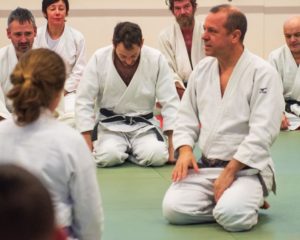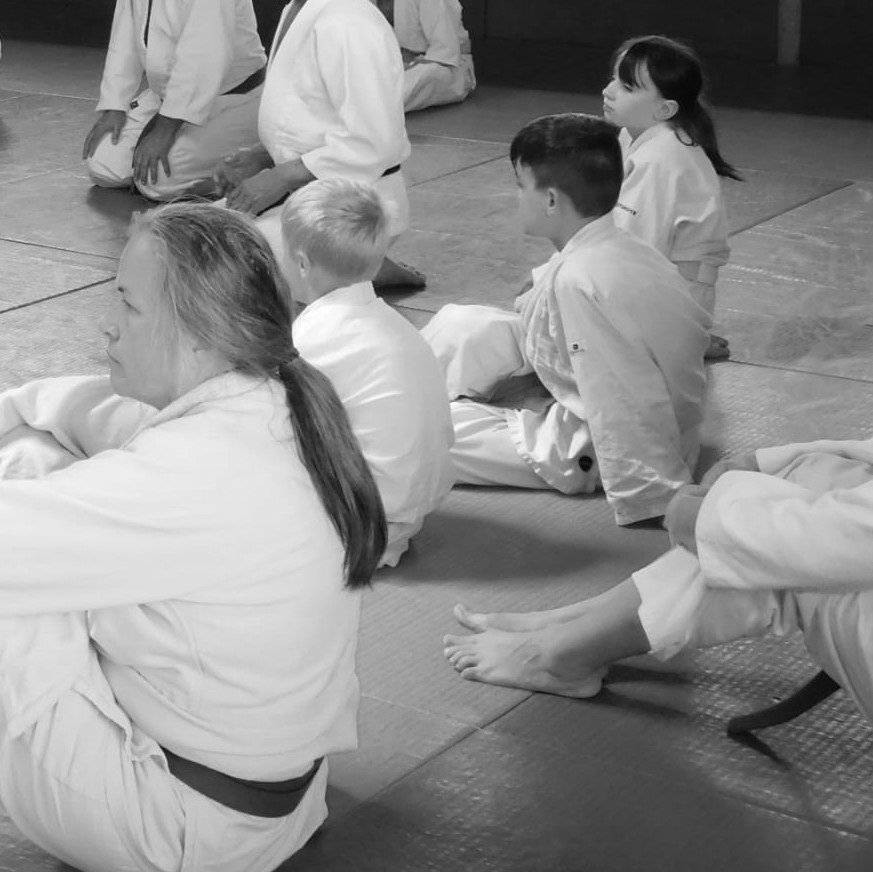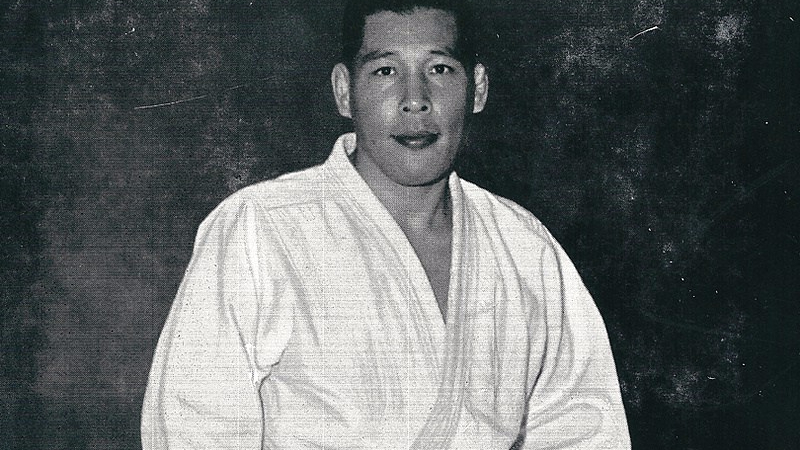We often recognise the work of Tokio Hirano by the spectacular aspect that his actions take, by the particularly ample and visible way his techniques, his waves, have of presenting themselves to our eyes and bodies.
It is certain that the forms that this produces provoke in us a joy, a feeling of freedom, a lightness that helps us to come out of our sometimes too studious study. But this amplitude and originality should not deceive us about what is truly at play in the various exercises proposed by Hirano because what we find there, in fact, is extreme concentration, calm precision, which finally has little to do with the initial perception of virtuosity.
For proof, even in the broad movements that he executes, the balance and mastery of the trajectory are always maintained, always forming curved and regular lines beyond any constraint. Even when his feet detach from the ground and he finds himself in the air, the tatamis seem to be always present under his feet, and this holds just as well for the waves of the nanatsu no kata, when it is a question, for example, of morote seoi nage or tai otoshi, of turning in space while keeping the inner impulse that allows mastery of the trajectory at every instant.
irano keeps in all his actions, in all his rotations and techniques, a precise continuity, a calm regularity, which creates an unstable balance at any moment, or as Igor Correa said, “stability in instability.”
We must then realise that what presents itself at first as spectacular and unfolds broadly in space is not ultimately as much as that, and that what we should look at first is this ability to maintain within the movement a restraint, something that, despite the vivacity and swiftness of a gesture, preserves a secret slowness, the very source of mobility.
It seems then possible to understand Hirano‘s movements as one thinks of a drawing traced in space, traversing the air with grace, continuity, and regularity, and despite the ephemeral dimension of this body calligraphy, it impresses in us a sensation of endless internal mobility, which is never destined to dissolve into external determination.
Therefore, we must think and feel at every moment that these broad gestures that we execute when we recreate Hirano‘s forms find their starting point in the paths traced inside the body and that it is from this internal slowness that the forms of the visible emerge.
This is why the movements in space that Hirano executes do not seem like individualised displacements but fundamentally the tracing of an impersonal body freed from all constraint and fixity. It seems that this understanding is at the source of Tokio Hirano’s legendary efficiency, that it is through this continuity, balance in instability, his way of forming regular curves moved by inner calm, that the ippon has a chance to exist, and that has made Hirano, in his shiai, not obey his initial and primitive impulses, not succumb to wild and uncontrolled energy, but, on the contrary, deploy an extraordinary efficiency, unique in the history of judo.
From this also emerges the adventurous dimension of Hirano. We can say that, thanks to this controlled center, it has been possible for him to launch into the unknown, dare a search that led him to create a kata outside of all social conventions that Japan imposed.
This flourishing creativity of Hirano can also be related to this unique intelligence of movement, which gave him courage to, in the face of Jigoro Kano’s immense work, assume his creativity by proposing an additional kata to judo, which he called the nanatsu no kata, form of the seven, which concentrates through its two series omote and ura, all the intelligence of his practice.
We propose that this 2024 New Year’s Ceremony be an opportunity to highlight all these hidden dimensions of Hirano‘s work, which have been revealed to us through the concentrated and internal work that Mr. Correa bequeathed to us, especially through the creation of the five principles that, upon closer inspection, are perfectly visible in each of his actions, in each form of nanatsu no kata.
In this New Year’s Ceremony, we could compare Tokio Hirano‘s work to the intuition Igor Correa had in choosing the emblem of Junomichi, the kokorosashi, thinking that it is through the simple and refined form of a sign, through the beauty of a movement made without hindrance, that we have a chance to touch the two intertwined intelligences that guide our practice, that of the heart and of the will.

Member of the technical commision FIAJ

